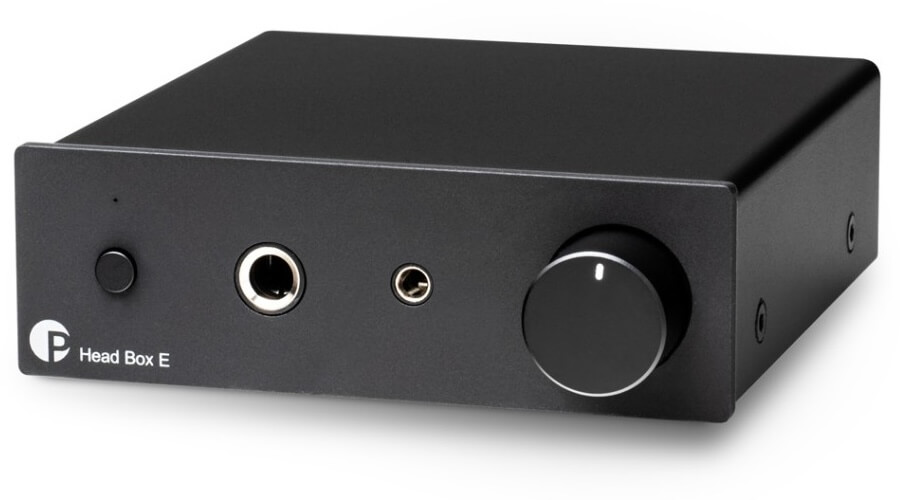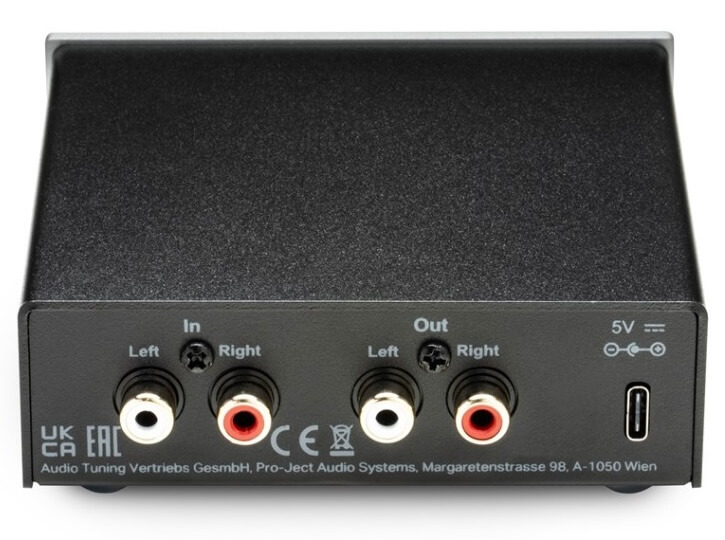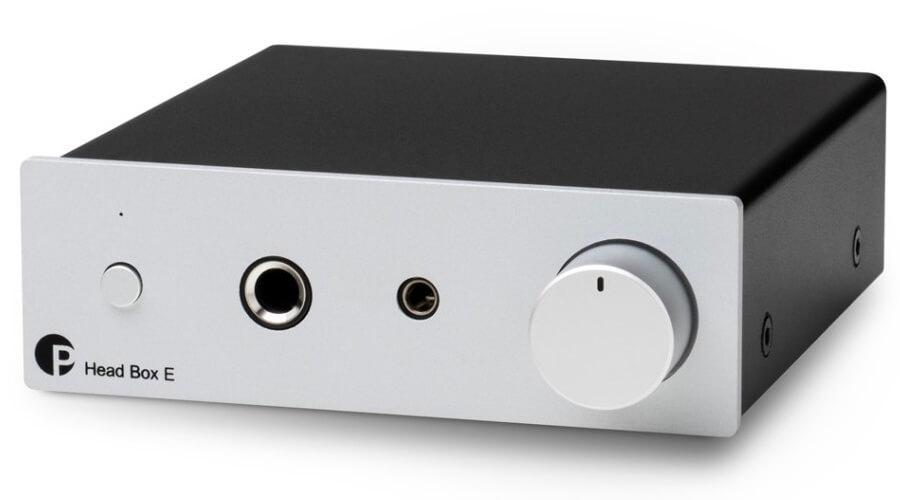If you’re serious about squeezing better sound out of your headphones without blowing your budget, an affordable desktop headphone amplifier like Pro-Ject’s new Head Box E deserves your attention. While the market is flooded with dongle DACs and compact amps from the usual suspects—Schiit Audio, JDS Labs, iFi, and others—the Head Box E aims to stand out by packing serious power into a surprisingly small package. It’s not just another pocket-friendly dongle; it’s built to drive even the most demanding headphones, all for around $120.
The Head Box E runs on an upgradeable power supply, compatible with Pro-Ject’s Accu Box S2 ($349) and Accu Box S2 USB units for those looking to squeeze even more performance out of their setup. It’s part of Pro-Ject’s E Series—a family that includes the Stereo Box E, Stereo Box S3 BT ($499), and Stream Box S2 ($899). This series represents the most affordable range of high-quality electronics in Pro-Ject’s lineup, offering solid performance without breaking the bank.

Pro-Ject Head Box E: Small But Mighty Desktop Headphone Amp
Weighing in at just 390 grams, the Head Box E is light enough to toss in your coat pocket if you’re on the move—though it’s more desktop companion than pocket amp. Pro-Ject touts it as “one of the most effective pound-for-pound hi-fi upgrades around,” and the specs back that up.
With 665 milliwatts of power into 32 ohm headphones, this amp is more than capable of driving a wide range of wired headphones—even the demanding ones. Pro-Ject claims it can outperform typical stereo amps when used in a two-channel setup with sources like a CD player or turntable, making it a versatile addition to any desktop or home audio rig.
Under the hood, the Head Box E uses fully discrete electronics rather than common integrated chips found in cheaper amps. This design choice gives Pro-Ject better control over the signal path, which should mean cleaner sound, stronger power delivery, and easier maintenance or repair down the line.
Connectivity-wise, you get a pair of RCA inputs to connect your sources, plus a bypass RCA loop output to pass the signal on to another amplifier or audio component—ideal for integrating the Head Box E into a larger stereo system without losing signal flow.
On the front panel, the Head Box E offers two headphone outputs—a standard 6.3mm jack and a 3.5mm mini-jack. Both can be used at the same time, letting you and a friend listen together without needing a splitter.

Technical Specifications: Pro-Ject Head Box E
- Output Power: 665 mW (into 32 ohms)
- Signal-to-Noise Ratio: -105 dBV
- Total Harmonic Distortion + Noise (THD+N): < 0.005%
- Gain: 11 dB
- Crosstalk: 65 dB
- Frequency Response: 20 Hz – 80 kHz (±0.02 dB)
- Analog Inputs: 1 pair RCA/Cinch
- Headphone Outputs: 1 x 6.3 mm jack, 1 x 3.5 mm jack
- Output Impedance (Headphone Amp): < 1 Ohm
- Analog Loop Out: 1 pair RCA/Cinch
- Power Supply: 5V / 0.5A DC
- Standby Power Consumption: < 0.5 W
- Dimensions (W x H x D): 103 x 37 x 120 mm
- Weight: 390 g (without power supply)

The Bottom Line
The Pro-Ject Head Box E packs solid specs and thoughtful design into a compact, affordable desktop headphone amp. Its fully discrete circuitry and respectable power output suggest it could hold its own against established competitors like the Schiit Magni Unity and JDS Labs Atom AMP II. But until we hear it in action, that claim stays on paper. Still, for $120, it’s a compelling option for anyone looking to upgrade from basic headphone outputs without breaking the bank.
For more information: project-audio.com
Where to buy: Coming soon — check price at Amazon.
